Recipe for Health: Hummus Chicken Wraps
Hummus chicken wrap , Niacin has some delicious benefits.
By Matthew Kadey, MS, RD
Jun 4, 2021
Here is some sobering news: Nearly half of adults in the United States have hypertension, and nearly half a million deaths yearly have included hypertension as a primary or contributing cause. Perhaps if more people ate foods rich in niacin—including chicken, tuna, salmon, avocado and peanut butter—it would take a bite out of the soaring blood pressure numbers.
According to a study in JAMA Network Open, adults who had an ideal level of dietary niacin intake (between 14.3 and 16.7 milligrams a day) had a lower risk of new-onset hypertension, defined as systolic blood pressure of 140 mm Hg or greater and/or diastolic blood pressure of 90 mm Hg or greater. While this link was discovered among people living in China, it may also apply to Americans at risk of hypertension. That makes these hummus chicken wraps a low-pressure lunch option.
1 bunch asparagus, woody ends trimmed and halved
1 C prepared hummus
4 large whole-grain sandwich wraps
2 C arugula
1 lb cooked and sliced chicken breast
1 C sliced roasted red pepper
2 T fresh lemon juice
Place asparagus in a steamer tray set over 1 inch of water. Bring water to a boil and steam asparagus covered until bright green and tender, about 3 minutes. Spread an equal amount of hummus over the surface of each wrap. Place equal amounts of arugula, chicken, asparagus and roasted red pepper on the bottom third of the wraps. Squeeze on lemon juice. Roll tightly, folding the edges in as you roll, and then slice in half on a diagonal. Makes four servings.
See also: Recipe for Health: Edamame Chicken Wraps
IDEA Fitness Journal SPRINT – June 2021
Matthew Kadey, MS, RD
Matthew Kadey, MS, RD, is a James Beard Award–winning food journalist, dietitian and author of the cookbook Rocket Fuel: Power-Packed Food for Sport + Adventure (VeloPress 2016). He has written for dozens of magazines, including Runner’s World, Men’s Health, Shape, Men’s Fitness and Muscle and Fitness.
Running is a convenient, low-cost and effective way to get a great workout, and, because of its low barrier to entry, it’s the mode of exercise many turn to for their personal health and fitness. Unfortunately, regular endurance running or jogging, whether outdoors or on a treadmill, can become tedious and, to be frank, a bit dull, causing many to abandon their running efforts. If this describes your feelings about running, but you really want to enjoy the benefits, here are nine tips that can help make your running workouts more fun and interactive.
Running on a hard surface like pavement or asphalt can be uncomfortable and running in a straight line is pretty boring. The solution? Trail running, which adds a ton of variety because the terrain changes and adds additional physical challenges, plus you have the added bonus of beautiful and varied scenery.
From the Swedish word for “speed play,” Fartlek protocols call for running sprints at various intervals, either for distance or time. To break up the monotony of your run, pick a spot in the distance and run as hard as you can to get there. You will be out of breath at the end of your sprint, so walk until your heart rate and breathing drop, and then resume your normal running pace until you decide it’s time for another sprint.
Specific speed training involves running as fast as possible and then taking a proper rest period. Speed training requires an all-out, 100% effort. To do that, each sprint requires a rest interval that is approximately five to six times as long as the sprint. For example, if you run 50 meters in eight seconds, you should allow approximately 40-45 seconds for proper recovery before the next sprint. To maintain energy and 100% effort with each sprint, be sure to take a full three- to five-minute rest period after a series of sprints to replenish your energy stores. A good workout might include five sprints followed by three minutes of rest, five more sprints followed by four minutes of rest, and then five to seven more sprints (plus a cool-down) to finish the workout.
If you played any outdoor sports growing up, you probably ran hills at some point. The late Chicago Bears running back Walter Payton made hill running popular for football players back in the early ‘80s because it helped him develop the strength and power required to break tackles. As a result, many coaches today use hill running to help athletes improve their fitness levels. While they’re tough, hills repeats are incredibly effective and worth adding to your runs whenever possible.
ACE shot this video featuring the San Diego Convention Center stairsbecause stair running is effective to get in great shape. If you live in an area that isn’t that hilly, you can probably find an outdoor stadium or bleachers where you can run stairs. When you’re traveling, look for a good set of stairs for a workout. Just like running hills, running stairs is hard, but provides the benefits of running without the monotony of jogging.
We all have our favorite playlists we like to listen to when exercising, but these can get a little stale over time. Download some podcasts or type in a favorite comedian on a service such as Pandora and listen while working out. Listening to a good podcast interview or a great comedy routine is an easy way to engage the brain, which means it’s not as focused on the physical work you’re performing. It can also make the time feel as though it’s moving faster, which can help you to log distance or volume.
If you’re looking for a fun way to get in a good cardio workout without the repetition of linear running, agility drills are a great option. Examples of agility drills include low- to moderate-intensity movements such as high knees, backpedaling, lateral shuffling or multidirection cone drills, all of which can be done with or without additional equipment such as resistance bands. Pick an open, flat surface, set up a few cones and you’ve got everything you need for a fun and challenging agility workout.
If you live in an area with access to a good trail system, investing in a comfortable pair of hiking boots and a hydration pack can provide you with a great option for aerobic endurance training without the repetitive stress of running. Hiking up and down steep hills challenges your body while you experience the benefits of being out in nature (of which there are many). If you have children, hiking is a great way to make exercise an activity the entire family can enjoy together.
If you’re the type of person who loves to play games, find an app that adds a competitive or playful element to your workouts. Zombies, Run!, for example, is an interactive app that creates the sounds of being chased by the undead, which can be a highly motivating way to make your run more challenging. Even if you’re not a fan of zombie culture, there are other apps that can help you gamify your run—a few searches should help you find the right ones for your interests.
Aerobic training is an important component of a well-rounded exercise program. Both steady-state workouts, such as trail running, and interval training, such as sprints or hills, can provide important health benefits, while also improving your aerobic capacity. And remember, for optimal safety and enjoyment, make sure you stay well-hydrated and pay attention to your surroundings.

Health and Fitness Expert
Pete McCall, MS, CSCS, is an ACE Certified Personal Trainer and long-time player in the fitness industry. He has been featured as an expert in the Washington Post, The New York Times, Los Angeles Times, Runner’s World and Self. He holds a master’s degree in exercise science and health promotion, and several advanced certifications and specializations with NSCA and NASM.

Your client’s shoulder is on fire. The excruciating pain feels like a blowtorch burning his rotator cuff. He has the biggest job interview of his life starting next week, Army Ranger school, and he must be ready. Ibuprofen, ice, cyrotherapy and turmeric—there must be some anti-inflammatory that works immediately to stop the pain and prevent damage.
If this scenario sounds familiar, it can be challenging to know how to help or advise your client. While it is beyond your scope of practice to diagnose or treat inflammation, a growing body of research suggests that certain nutritional components have anti-inflammatory properties that can help reduce the pain of inflammation. Read on to learn more about acute and chronic inflammation, its causes and effects on the body, and what the research says about nutritional strategies that are purported to help tame the fire of inflammation.
Inflammation is the immune system’s way of trying to protect the body by removing stimuli that may or not be harmful and starting the healing process (Nicholson, 2016). Harmful stimuli include bacteria, viruses, chemicals and radiation (including UV rays from the sun). Non-harmful stimuli include foods like shellfish or broccoli for those who have a food sensitivity or allergy (in other words, these foods are not harmful to most people).
Without an inflammatory response, infections, wounds and other tissue damage would not be able to heal. When an injury occurs, acute inflammation can increase blood flow to the injured area, resulting in increased redness, heat and swelling. Defense cells may bring fluid to the inflamed tissue, which also causes swelling. Though symptoms stemming from inflammation can be frustrating and sideline a person from his or her normal daily activities, the root cause of the symptoms serves a purpose. Greater blood flow and immune system activation are critical steps in the healing process.
Acute inflammation starts rapidly and becomes severe quite quickly. If it doesn’t cause excess pain, this type of inflammation should be left to run its course, explains Michael Roncarati, D.P.T, C.S.C.S., director of rehabilitation for the NBA’s Atlanta Hawks. “We probably don’t want to blunt the local inflammatory response in the first 48 to 72 hours,” says Roncarati. That’s because taming inflammation during this time may do more harm than good by shortcutting the healing process. Instead, Roncarati recommends movement and low-level muscle contraction to help control swelling.
It is important to realize that resistance training can also be a source of inflammation caused by “damage” to the muscles cells. Inflammation increases blood supply to the damaged area, leading to the release of substances secreted by the immune system as well as growth factors to help clean up the damaged tissue and remove waste products (Hamada et al., 2005; Tidball, 2005; Charge and Rudnicki, 2004). Among these substances are free radicals. While free radicals are essential for muscle functioning and muscle growth, excess free radicals can impair muscle contraction and contribute to weakness, fatigue and dysfunction (Braakhuis, 2012; Walsh et al., 2011).
In contrast to acute inflammation, which usually lasts a few days or, in some cases, a few weeks, chronic inflammation can last for several months and even years. It may be caused by any number of diseases that cause inflammation, such as asthma, rheumatoid arthritis or ulcerative colitis; exposure to a low level of a particular irritant, such as a chemical or mold, over a long period of time; or by the failure to eliminate whatever caused the acute inflammation in the first place. Additionally, chronic inflammation can eventually lead to other diseases and conditions, including atherosclerosis and some cancers.
It is worth noting that researchers have increasingly linked lifestyle factors such as being sedentary, consuming a nutrient-poor diet, experiencing high stress, and chronic use of anti-inflammatory medications with both chronic inflammation and increased vulnerability for chronic disease such as those listed above (Bosma-den Boer, van Wetten and Pruimboom, 2012).
While the root causes of chronic inflammation should always be addressed, the use of anti-inflammatory ingredients and foods can be considered as long as they do no further harm.
A healthy diet is a great place to start. In fact, a diet rich in vegetables, fruits and whole grains naturally contains plant compounds that protect the body’s tissues, including muscles, from the damaging effects of excess free radicals (Powers and Jackson, 2008).
However, you can get too much of a good thing if you load up on supplemental doses of antioxidants. Though vital to muscle health and functioning, in excess, vitamins C and E can impair training gains. Several studies have shown that supplemental doses of more than 1,000 mg of vitamin C impairs sports performance (Braakhuis and Hopkins, 2015). One study found that a daily supplement of 1,000 mg of vitamin C plus 235 mg (261 IU) of vitamin E interferes with cell signaling after resistance training, impairs increases in muscle strength due to regular strength training, and interferes with adaptations to endurance training (Paulsen et al., 2014a; Paulsen et al., 2014b).
While regular exercise can increase vitamin C requirements, a diet that includes plenty of fruits and vegetables should suffice (Gerster, 1998). The only time vitamin C supplements should be considered is in the case of deficiency or suboptimal dietary intake due to dietary restrictions.
Vitamin E prevents damage to muscle cell membranes, but vitamin E supplements aren’t necessary for the average healthy person with a sound diet. Furthermore, a significant amount of research has shown that supplemental vitamin E does not improve athletic performance or decrease muscle damage (Taghiyar et al., 2013; Ciocoiu, Badescu and Paduraru, 2007; Gaeini, Rahnama and Hamedinia, 2006; Sharman, Down and Norgan,1976). The best way to get plant compounds, including antioxidants to tame excess inflammation without decreasing the acute inflammatory response, is to consume plenty of whole fruits, vegetables and 100% fruit or vegetable juice (Heaton et al., 2017).
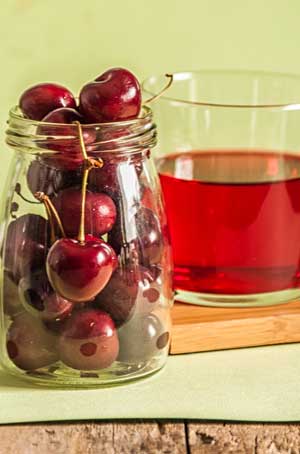 Anthocyanins 1 and 2 are plant-based compounds that inhibit Cox-1 and Cox-2 enzymes. Cox-1 maintains the gut lining and tissue health, while also driving acute inflammation. Cox-2 increases inflammation and pain several hours later. Non-steroidal anti-inflammatory drugs, including ibuprofen, and several other drugs work by inhibiting Cox-1 and Cox-2 enzymes.
Anthocyanins 1 and 2 are plant-based compounds that inhibit Cox-1 and Cox-2 enzymes. Cox-1 maintains the gut lining and tissue health, while also driving acute inflammation. Cox-2 increases inflammation and pain several hours later. Non-steroidal anti-inflammatory drugs, including ibuprofen, and several other drugs work by inhibiting Cox-1 and Cox-2 enzymes.
Cherries, especially tart ones, and tart cherry juice, however, are natural sources of anthocyanins 1 and 2, and research suggests they may help decrease inflammation, exercise-induced muscle pain and other symptoms of muscle damage (Bell et al., 2014). Another study found that two bottles of tart cherry juice per day for five to eight days prior to running or a damaging bout of elbow flexion contractions led to lower levels of inflammatory markers, while also decreasing strength loss and pain (Connolly, McHugh and Padilla-Zakour, 2006).
Limited data suggests taking 2 grams of ginger, either raw or heat-treated (as found in a bottle of spice) can decrease inflammation and delayed onset muscle soreness after exercise (Black et al., 2010). Two grams is a relatively small amount of ginger root that can be added to a smoothie without dramatically altering the flavor. A few brands of ginger ale or ginger drinks contain several grams of ginger. Some, though not all, studies show ginger may interact with blood thinners to increase bleeding. Anyone on blood thinners should speak to their physician first prior to taking large doses of ginger each day (Marx et al., 2015).
Omega-3 fatty acids, particularly EPA and DHA (found in fatty fish and some algae), are incorporated into cell membranes and improve fluidity of membranes, which may decrease muscle cell damage during exercise (Lembke et al., 2014).A diet high in saturated fats, which are hard at room temperature, makes cell membranes hard.
Studies examining EPA and DHA show they influence enzymes that help resolve inflammation. EPA also reduces COX-2 expression. While the research in this area is limited, several studies have shown that regular intake of EPA and DHA can help minimize inflammation, muscle soreness and perceived pain, while improving range of motion in untrained adults after a bout of eccentric exercise (Tsuchiya et al., 2016; Jouris, McDaniel and Weiss, 2011; Tartibian, Maleki and Abbasi, 2009). To date, there are no published studies examining EPA and DHA in trained adults.
Finally, it is worth noting that although protein is often recommended after training, particularly resistance training, to jumpstart the muscle-repair process, acute protein intake has no measurable effect on muscle damage or recovery of muscle function (Pasiakos, Lieberman and McLellan, 2014). Additionally, very limited evidence suggests curcumin, a component of turmeric, may lower the rise in inflammatory markers after exercise, but may not affect muscle soreness (McFarlin et al., 2016).
Many dietary factors can increase chronic inflammation, including consuming a diet high in trans-fatty acids, saturated fats, sugar or refined carbohydrates. Food allergies and sensitivities may also play a role in inflammation.
Cooking techniques may also increase compounds found in foods that promote inflammation. For instance, advanced glycation end products (AGEs) are found in foods cooked on high dry heat, browned foods, animal foods higher in fat and protein, sweets such as candy and cookies, fried foods and processed packaged meats. Preliminary evidence in mice suggests a diet rich in AGEs leads to an accumulation of AGEs in tendons, which may increase inflammation and alter tendon health and contribute to tendon injuries (Skovgaard et al., 2017).
 A diet higher in fiber, whole grains and plant foods and low in AGEs may help reduce inflammation. AGEs can be minimized by using low heat, slow cooking methods and marinating foods. Boiling, steaming, poaching and stewing are better than cooking over high, dry heat. Acidic marinades and polyphenol-rich foods including cranberries and cherries have also been shown to decrease AGE production during cooking (Uribarri et al, 2010).
A diet higher in fiber, whole grains and plant foods and low in AGEs may help reduce inflammation. AGEs can be minimized by using low heat, slow cooking methods and marinating foods. Boiling, steaming, poaching and stewing are better than cooking over high, dry heat. Acidic marinades and polyphenol-rich foods including cranberries and cherries have also been shown to decrease AGE production during cooking (Uribarri et al, 2010).
Jenna Corbin, M.S., R.D., author of Performance Nutrition for Baseball Players, takes a systematic approach to helping clients by focusing on one or two of the biggest and easiest to modify (for the individual) contributors to chronic inflammation.
“Often this means addressing any food allergies, sensitivities and intolerances, and reducing over-processed foods while increasing produce. An approach will only be helpful and effective if the individual will implement it, so working with them to decide on what to focus on first is important,” says Corbin.
Finally, remember that although it can be tempting to use supplements that immediately decrease inflammation, this approach may actually slow down the healing process. The best advice you can give your clients is to follow a sound diet rich in plant-based foods and fatty fish, which can go a long way toward contributing to lower levels of chronic inflammation.

Contributor
Marie Spano, M.S., R.D., C.S.C.S., C.S.S.D., is a nutrition communications expert and sports nutritionist for the Atlanta Hawks and Atlanta Braves. She is co-editor of the NSCA’s Guide to Exercise and Sport Nutrition and author of hundreds of magazine and trade publication articles on a variety of topics ranging from novel food ingredients to optimal sports performance recovery foods.
Mobility, stability and strength are all important factors in having healthy spinal alignment. When working with sedentary or untrained individuals, beginning with a basic core strengthening routine can provide huge benefits in stabilization and strength. In tough cases, you’ll need to look deeper, literally, to get the outcome you and your client are looking for.
There are many causes of low back pain, so make sure your client has been cleared by their doctor to participate in an exercise program. Similarly, you may find that you are corresponding regularly with your client’s chiropractor or physical therapist. In these cases, you’ll need to clearly articulate your exercise programming and be prepared to discuss the strength and mobility observations you’ve made during your assessment.
When addressing back pain due to musculoskeletal dysfunction, abdominal or core strengthening exercises have long been a go-to recommendation to stabilize the spine. In situations where this hasn’t been effective, it is important to remember that the spine is similarly supported by deeper musculature that may need to be addressed.
When we review the anatomy of the musculature supporting the spine, we quickly note the multifidus, transverse abdominus, rectus abdominis, internal and external obliques, as well as the latissimus dorsi and the gluteal complex. These muscles all make up what we think of as the core.
Looking a layer deeper, you’ll notice that stabilization of the pelvis and the lumbar spine is also supported by the psoas, and the lumbo-pelvic-hip complex relies on the piriformis, illiacus and pelvic floor.
The lumbo-pelvic-hip complex is an intricate connection between the lower limbs and spine. This complex set of seemingly immobile bones provides stability and acts as an essential coordination point in the normal contralateral movement pattern of most movement, including the most basic movement pattern of all, walking.
The balance of mobility, stability and strength is essential to providing coordination throughout the kinetic chain. Sitting for long periods of time creates an imbalance, providing the perfect environment for connective tissue to shorten and weaken.
Other environmental influences can have the same effect on the pelvic floor. Pregnancy and childbirth, for example, can stretch, damage and/or weaken the pelvic floor muscles. Likewise, lack of activity and obesity can both take a toll on the ability of these muscles to perform their essential function.

It is well documented that sitting leads to shortened iliacus and psoas muscles, and the entire group of hip flexors. Because they are held in a shortened position all day long, these muscles lose their mobility and elasticity. You may well know that it is important to focus on increasing the range of motion of these muscles through holding static stretches for 30 seconds to five minutes. This can decrease any hyperlordosis caused by the shortened muscles that may lead to increased back tightness or pain.
Don’t stop there. Once you increase mobility and elasticity, the body will have a stabilization demand. You must increase strength and proprioception in the hip flexor muscles to keep them from finding stability by tightening again.
These exercises will increase strength, stabilization and proprioception of the muscles.
In this exercise, your client must stand on one foot; however, training balance is not the first step. At first, your client should hold on to something stable, like a ballet bar or the wall.
Regress this exercise: If the hip hikes with the knee raise, lower the height of the hurdle and consider stretching the quadratus lumborum.
Progress this exercise: Increase the height of the hurdle until your client’s foot is clearing the height of their knee.
Once this becomes easy, decrease the stabilization. Have your client hold on to a walking stick, dowel rod or your hand instead of the wall.
Once your client can progress to balancing without an external stabilizing method, add a light leg weight or use a cable with a leg cuff. Note: you may have to add back in the external stabilization after adding weight and move through the progression again.
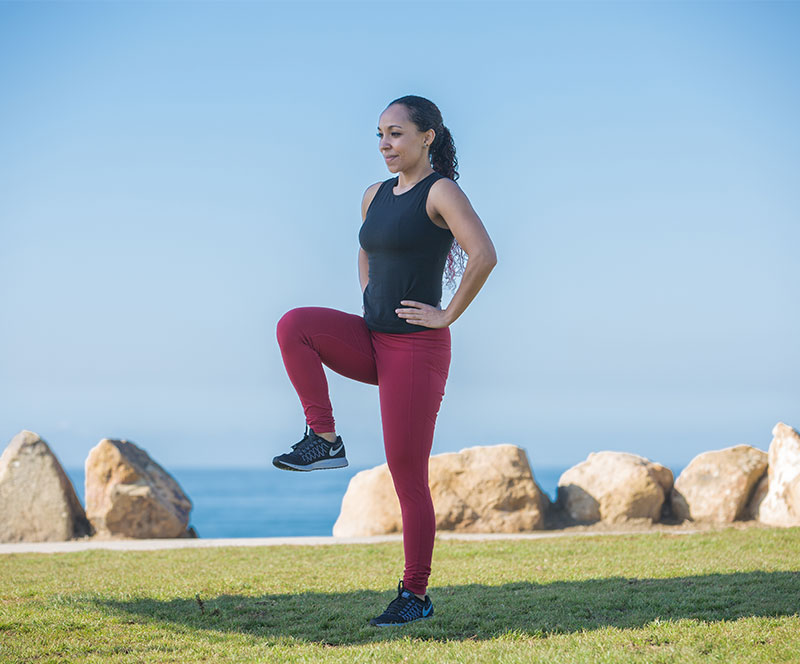
You have likely heard of Kegel exercises. These exercises are a great way to reconnect with the pelvic floor muscles if they are not firing. However, as with any muscle, progressive load is required to improve strength.
Sumo squats and deep squats are a great way to engage the pelvic floor muscles under a progressively greater load.
When working with a client with occasional back pain, an appropriate squat progression becomes even more important.
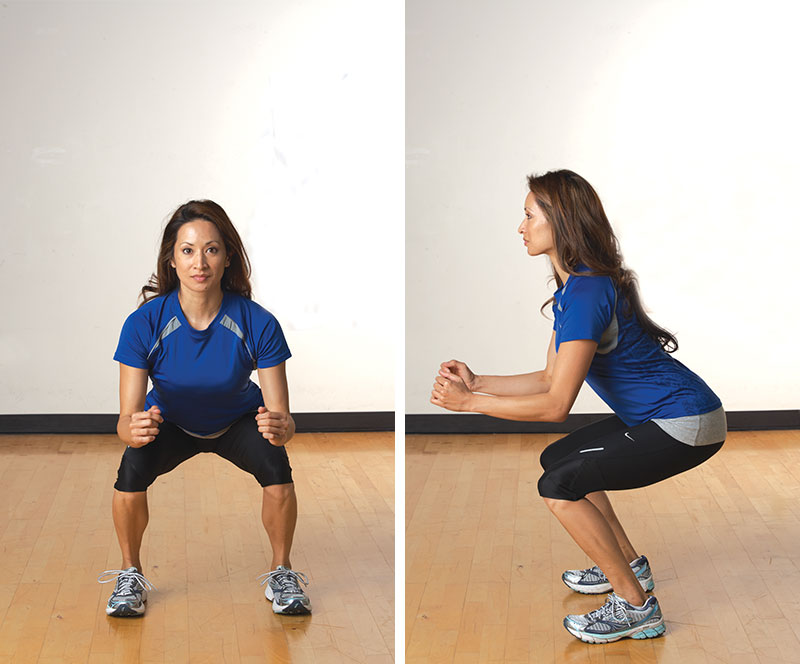
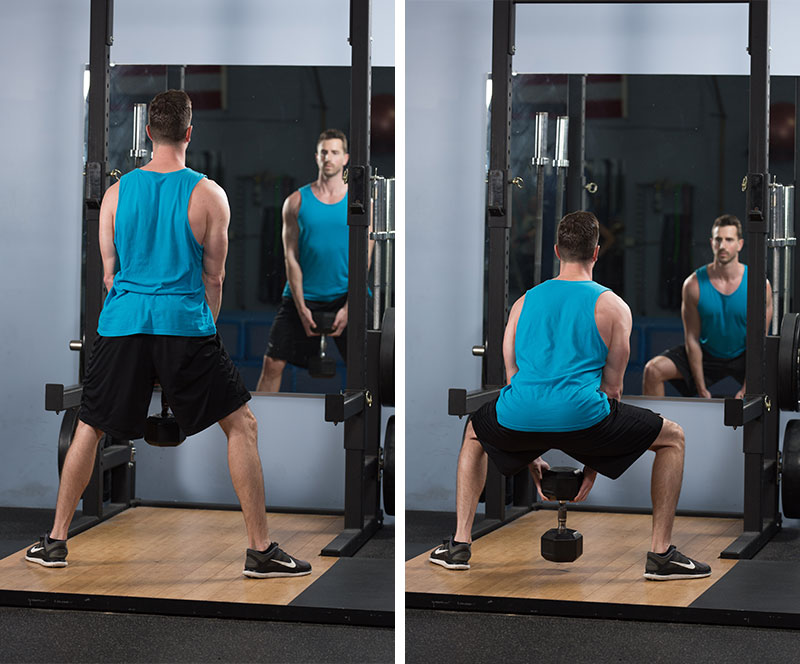
These exercises do not represent a complete program for back pain, but instead serve as a deeper level of exercise progression for clients who continue to struggle with recurring incidents. Slow and steady progression is key to decreasing back pain, so start at the very lowest progressions recommended and consistently progress only when ready.
If you haven’t already done so, expand your professional network to include chiropractors, massage therapists and physical therapists. It often takes a collective mind to help those with stubborn back pain, and an expanded network is an excellent way to ensure that your client is getting the best of care.
Want to learn more? Read about the muscles of the core.

Contributor
Lauren Shroyer has been working with athletes for almost 20 years. In her practice today, Lauren specializes in the rehabilitative exercise of athletes with chronic overuse injuries, helping athletes of all ages return to the sport & activity they love. In addition to her NATA-BOC certification, Lauren has a Master’s degree in Kinesiology from Illinois State University and a Bachelor’s degree in Psychology from the University of Illinois.
Most of us are familiar with the “superfood” regulars—chia seeds, turmeric, beets, dark leafy greens, blueberries—as they are easy to source and regularly found in online recipes, cookbooks and local restaurants. But there’s a whole world of lesser-known foods that should also be on your plate.
The following five foods are gaining in popularity for their uniqueness and health benefits. All possess antioxidant and anti-inflammatory compounds that can help reduce your risk of heart disease, cancer, neurodegenerative diseases, diabetes and weight, and can be found at your local market, health food store or online.
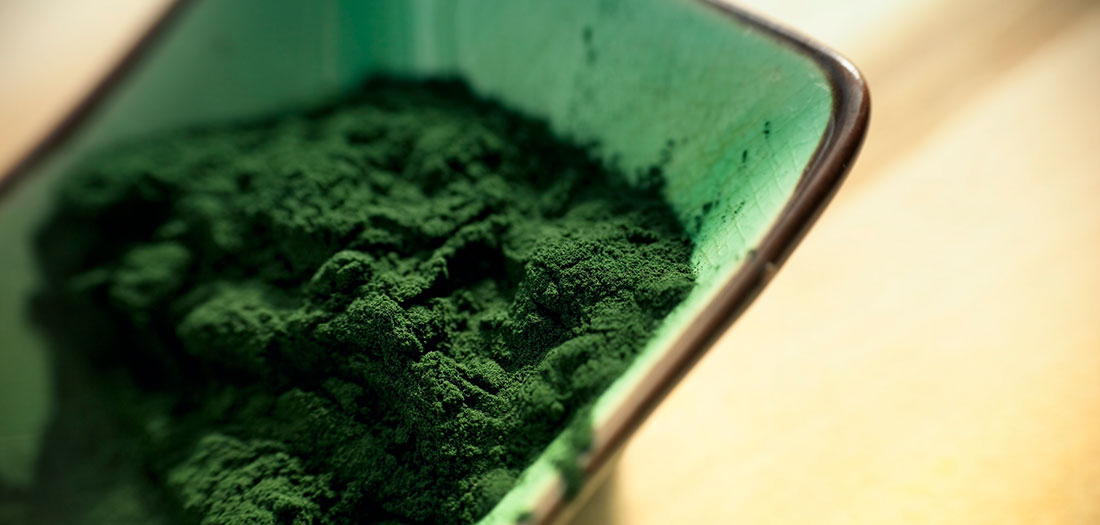
Spirulina is a type of blue-green algae (technically a type of cyanobacteria) that is a concentrated source of protein, vitamins, minerals and antioxidants. Unlike other bacteria, spirulina contains chlorophyll and uses the sun as a source of energy, much like plants. In the United States, spirulina is mostly used as a supplement and added to smoothies (which turns it a cool blue color), while in the other parts of the world, it is widely used to prevent malnutrition.
Spirulina contains 18 different amino acids, all of which are highly digestible, and it doesn’t require cooking to increase the bioavailability of the protein. Some of the interesting micronutrients in spirulina include vitamins B12, K and E, and iodine, calcium, iron, magnesium, selenium, manganese, potassium and zinc. Some of these nutrients act as antioxidants, cofactors for enzymatic reactions in the body, or in detox pathways. Spirulina also contains gamma-linolenic acid, a fatty acid necessary for skin, joint and heart health. This type of fat is a precursor to important biochemicals, which act as chemical mediators for inflammation and immune reactions.
A note of caution about where the spirulina is sourced: If harvested from polluted waters or cultivated incorrectly, it can accumulate toxins from the environment, so choose organic and check the harvest location. Because of the dark color, regular consumption of spirulina can turn stools a dark green color and may increase intestinal gas, neither of which are harmful. Start slowly to see how much your body can tolerate.
RECIPE IDEA: Make a superpower smoothie with coconut milk, grass-fed vanilla whey protein powder, 1 frozen banana, 1 tablespoon chia seeds, ½ avocado, and a scoop of spirulina. Blend and enjoy.

This exotic tropical fruit, also known as pitaya, hails from Mexico, South America and Southeast Asia. There are three varieties of dragon fruit, which can either be sweet or sour: red skin/red flesh, red skin/white flesh and yellow skin/white flesh. Some describe the flavor as a cross between a pear and a kiwi.
The tiny black seeds in the flesh are full of both fiber and healthy fats, and the red pigment comes from betacyanins, which can help protect against oxidative damage and reduce inflammation. Some of the health benefits associated with regular consumption of dragon fruit include better digestion (due to the fiber), reduced cholesterol (thanks to the fiber, niacin and vitamin C), improved immune system (antioxidants and vitamin C), and a natural antibacterial and antifungal agent.
RECIPE IDEA: Cut the dragon fruit in half, scoop out the flesh and place in a food processor with 1 tablespoon of chia seeds and blend until smooth. Optional: Add 1 tablespoon of raw honey or pure maple syrup if too sour. Store in the refrigerator and use as jam on your sprouted-grain bread with your favorite nut or seed butter.
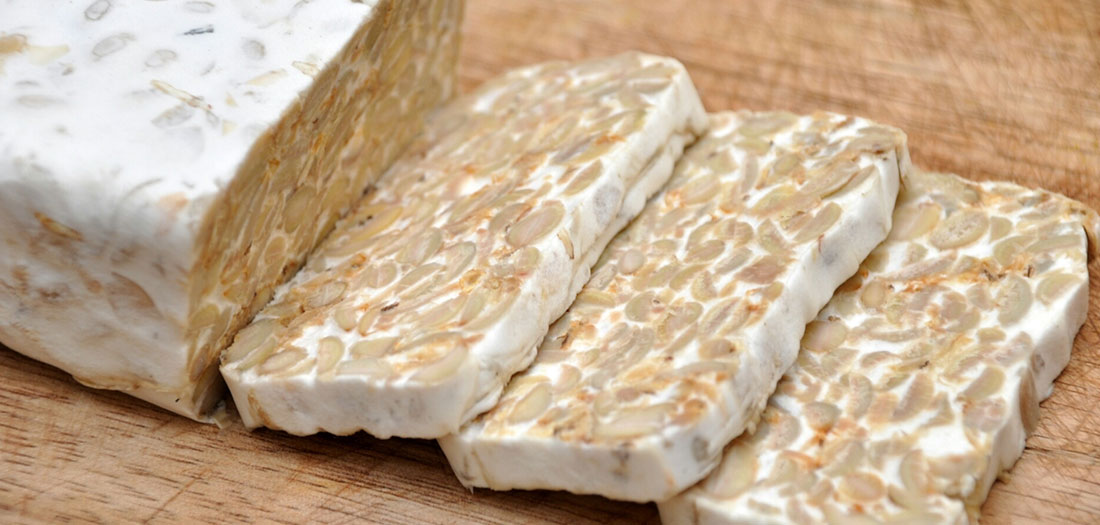
Tempeh is a fermented soybean “cake” that originated in Indonesia. The whole soybean is used and the fermentation process produces a high number of probiotics, which are the good bugs that live inside your body. Probiotics are known the help improve digestion, decrease inflammation, improve production of neurotransmitters in the gut and brain, and help with weight control. Consumption of tempeh and other products made from whole soy (edamame, tofu) can also help improve bone density due to the soy isoflavones, calcium, phosphorus and copper. Tempeh can also help treat candida in the gut because it is fermented.
The protein content of tempeh is equivalent to that of animal protein, which makes it a great choice for Meatless Mondays or if you want to be a part-time (or full-time) vegan. A note of caution: There is mixed evidence regarding soy intake and breast cancer. If you have a history of estrogen receptor positive breast cancer, limit your intake to once a week. There is no study that states that soy must be avoided in this case. Of course, you must decide what works best for you.
RECIPE IDEA: Naturally very bland, tempeh will take on the flavor of whatever you use as a marinade. We like to use salsa or a homemade tamari-miso-ginger vinaigrette and pour it over crumbled tempeh. Let it marinate overnight to really soak in the flavor. Heat a large nonstick pan and sauté the tempeh with chopped onions, mushroom, zucchini and baby greens for a nutritious and delicious meal.

Also known as Inca Peanuts, sacha inchi are actually the seeds on the plukenetia volubilis plant. Native to the Amazon rainforest, these seeds (also sold in oil and powdered forms) are high in protein, fiber, omega-3, -6 and -9 fatty acids, potassium, calcium and magnesium. Some of the health benefits associated with sacha inchi include improvements in digestion, blood lipid profile, and mood and cognition, and reduction in inflammation. Seeds are sold roasted and can be found in specialty health food stores and online.
RECIPE IDEA: For a great anytime snack, mix ½ teaspoon each of cinnamon, smoked paprika and pink Himalayan sea salt. Add ½ teaspoon raw honey and 1 teaspoon virgin coconut oil. Stir to combine and stir in ¼ cup sacha inchi seeds. Place seasoned seeds in a small pan over low heat on the stove. Cook 4-5 minutes, shaking pan often to prevent seeds from burning.

These tiny gluten-free, grain-like seeds grown primarily in Ethiopia are used traditionally to make injera, a sourdough-risen flatbread. With a nutty, earthy flavor and grainy texture, teff can be used as a hot porridge (sweet or savory), baked into a quick bread, or used in place of cornmeal for a polenta-type dish. Teff’s high iron content helps the body to make hemoglobin, a protein found in red blood cells that increases oxygenation to cells and improves circulation. High levels of calcium, manganese, and phosphorus can help reduce bone loss that naturally occurs with ageing. Digestion improves with regular teff consumption due to its fiber content, with reduced gas, bloating and cramping normally associated with gastrointestinal disorders and increased transit time (the time it takes food to pass through the intestines). This vitamin B6-rich seed can also improve heart health, as B6 helps regulate homocysteine, which is linked to inflammation and the development of heart disease. Teff is also naturally gluten-free, which makes it a good choice for those with celiac disease.
RECIPE IDEA: Supercharge your breakfast with teff pancakes. Combine 1 cup teff flour, ½ tablespoon baking powder, ½ teaspoon arrowroot and a pinch of sea salt. Add 1 tablespoon virgin coconut oil, 1 cup unsweetened almond milk, 1 egg, ½ teaspoon cinnamon, and 1 teaspoon pure vanilla extract. Mix to combine. Heat a large non-stick skillet over medium-high heat and add coconut oil to coat the pan. Use a large spoon (about 2 tablespoon) to drop batter onto the hot pan. Cook 2-3 minutes per side. Serve with homemade maple yogurt for a high-protein, sweet topping (mix together ½ cup plain Icelandic yogurt with ½ teaspoon cinnamon and 1 tablespoon pure maple syrup).
Looking to expand your nutrition knowledge and learn how to translate that information into actionable lifestyle changes for clients and patients? Learn more with ACE’s Fitness Nutrition Specialist program.
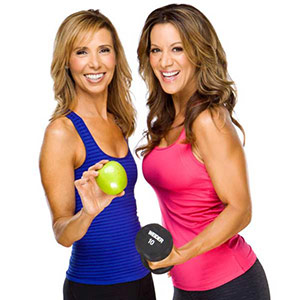
Contributor
Tiffani Bachus, R.D.N., and Erin Macdonald, R.D.N., are the co-founders of U Rock Girl!, a website designed to nourish the mind, body and spirit of women of all ages and stages of life. They have just authored the rockin’ breakfast cookbook, No Excuses! 50 Healthy Ways to ROCK Breakfast! available at www.URockGirl.com
If a little exercise is good for you, more must be better, right? Yes, but only up to a point. When it comes to exercise volume, there is a “dose-response relationship,” which means that the more you work out, the more benefits you will achieve, but there is a tipping point beyond which the amount of exercise you perform can do more harm than good. This point can be reached by one or both of the following two ways:
This tipping point is known as overtraining syndrome (OTS) and, in short, leads to a decrement in fitness level and possibly injury. Whether you are male or female, you are equally at risk for OTS, so recognizing the early signs and combating them can prevent detrimental fitness and health outcomes. Here are nine signs of overtraining to look out for:
1. Decreased performance.
The telltale sign of overtraining is a lack of improved performance, despite an increase in training intensity or volume. Decreased agility, strength and endurance, such as slower reaction timesand reduced running speeds are all common signs of overtraining.
2. Increased perceived effort during workouts.
Not only can overtraining decrease performance, it can also make seemingly effortless workouts feel unusually difficult. A clear sign of this is an abnormally elevated heart rate during exercise or throughout the day. If you are experiencing OTS, you may find that it takes longer for your heart rate to return to normal after a workout.
3. Excessive fatigue.
A few days of fatigue or “heavy legs” is expected at times. But fatigue will accumulate in a body that never has a chance to fully recover from previous workouts. Further, chronic, negative energy expenditure leads to something called “low energy availability,” which means that the body is consistently pulling from its own energy stores (carbs, protein, fat). This can be the result of too much training or too little fueling.
4. Agitation and moodiness.
Overtraining significantly affects your stress hormones, including cortisol and epinephrine. This hormonal imbalance can cause mood swings, unusual irritability and an inability to concentrate.
5. Insomnia or restless sleep.
Sleep ideally provides the body time to rest and repair itself. But overproduction of stress hormones, as mentioned above, may not allow you to wind down or completely relax, making sleep much less effective (which compounds chronic fatigue and moodiness).
6. Loss of appetite.
A hormone imbalance can also affect hunger and satiety mechanisms. More training should stimulate more appetite, but the physiological exhaustion of OTS can actually lead to appetite suppression.
7. Chronic or nagging injuries.
Overused muscles and joints can cause constant aches or joint pain. Pain that does not subside in two weeks (or so) should be considered a notable injury. Overtraining taxes all of the body’s systems and also makes it more difficult to ward off infections. Thus, frequent illnesses and upper-respiratory tract infections (URTIs) are signs as well. Medical complications may also include low bone mineral density and low testosterone.
8. Metabolic imbalances.
Long-term low energy availability may lead to nutrient deficiencies, such as iron deficiency anemia, which have the potential to harm both health and performance. Medical complications can also involve the cardiovascular, gastrointestinal, endocrine, nervous or reproductive systems (e.g., menstrual cycle disturbances in women).
9. Psychological stress and/or depression.
Some people live for punishing workouts and grueling competitions. If this sounds like you, the inability to train or race (combined with an imbalance of hormones and lack of quality sleep) can significantly affect your psyche.
If you recognize these symptoms in yourself, seek the help of a physician or other health professional to seek help. In some workout arenas, rhabdomyolysis is a right of passage, but it is important to understand that the kidneys shutting down is NOT the sign of an accomplished workout (but rather a sign of acute overtraining).
A better approach is to follow a periodized training program that includes both active recovery and complete rest. Rest can be frustrating, but recognize that a day or two spent on the foam roller is better than a day or two in a hospital bed. Recovery today not only allows for greater production tomorrow, but likely fewer missed training days over the next few months.

Contributor
Justin Robinson is a Registered Sports Dietitian and Strength and Conditioning Coach who has worked with athletes from youth to professional level. As the nutrition director and co-founder of Venn Performance Coaching, he specializes in practical sports nutrition recommendations and functional conditioning techniques. Over the past 15 years, he has worked with athletes from the youth to professional level, including runners and triathletes, MLB players and U.S. Military Special Operations soldiers. He graduated from Cal Poly, San Luis Obispo with a dual degree in Nutrition and Kinesiology, completed his dietetic internship at the University of Houston and earned his Master’s Degree in Kinesiology at San Diego State University.
Foam rollers are an effective method of reducing tension and increasing muscle length for either a pre-workout warm-up or post-exercise active recovery. Technically known as self-myofascial release (SMR), the use of foam rollers for the purpose of reducing muscle tension has become a widely accepted fitness practice.
There are two prevailing theories regarding why foam rolling works:
While your clients may be less interested in how it works, they definitely want to know why they should be foam rolling on a regular basis. Here are six specific benefits of using foam rollers that you can share with your clients or group fitness participants. The more helpful information you can provide, the more others will look to you as a credible and reliable source of fitness information, which only helps to further your success as a health and fitness professional.
In general, foam rollers provide the greatest response when placing a body-part directly on top of the roller and moving rhythmically to apply pressure to the underlying tissues. For suggested foam roller exercises that can be used as a warm-up or cool-down, follow this link.
As with any mode of exercise it’s important to understand both the advantages and disadvantages and identify the best practices for how it can be used with training clients or class participants. It is up to you to identify the best time to apply foam rolling for a client’s specific needs; for a more detailed explanation of how foam rollers create myofascial release, check out this article published in CERTIFIED.
| Types of Foam Rollers and their Benefits
As foam rolling has grown in popularity, a greater variety of rollers have been created, each promoting specific types of benefits. |
|||
| Type | Description | Advantages | Disadvantages |
| Soft-core foam roller | A soft foam roller that is easier to compress and places less force directly on the muscle. | The pliable surface allows a greater contact with muscle tissue.
May be more comfortable when first introducing clients to foam rolling. |
Over time, repeated use can cause foam to change shape and become compressed, which reduces its effectiveness.
May not apply enough force for extremely active and fit individuals. |
| Hard-core foam roller | A foam roller with an outer surface of foam and an inner core made from hard plastic. | Will maintain shape over repeated uses.
Can apply a significant amount of pressure to the contact area of the muscle. |
May apply too much pressure and be uncomfortable for certain individuals. |
| High-density foam roller | These rollers are made from specific types of dense foam that is more resistant to compression. | The density of the foam roller allows greater pressure to be placed on areas of adhesion and tightness.
The thicker foam allows the roller to maintain its shape for a longer period of time. A good option for individuals who may not experience benefits from a soft roller, but are not yet ready for a roller with a hard inner surface. |
May be too dense and cause discomfort for certain individuals. |
| Textured foam rollers
(surface has patterns or grooves) |
The external surface of the foam roller has a specific pattern or grooves that places pressure on different parts of the tissue. | The theory is that the patterns or texture in the surface of the roller place different amounts of pressure on the muscle, thus promoting circulation. | Depending on the type of roller, the patterning could cause increased pressure in certain areas, leading to localized feelings of discomfort or an excessive amount of pressure in specific areas. |
| Balls | The circular shape of a ball allows pressure to be focused on specific areas. Like foam rollers, balls come in a variety of sizes and densities. Many companies make specific SMR balls, but almost any type of ball (e.g., golf, tennis, lacrosse or inflatable) can be used. | The density and size of the ball allows pressure to be placed directly on specific areas of the muscle. | The surface of the ball may be difficult to adjust to a targeted area of adhesion.
Certain balls may be too dense and cause discomfort or pain. |
| Rolling sticks | These are hand-held tools that can be used to apply pressure and create friction directly on specific adhesions or areas of tightness. | Allows force to be applied directly to an adhesion or area of discomfort. | It can be hard to use on certain parts of the body, such as the lumbar or thoracic spine. |
| Vibrating foam roller | This roller features an internal motor that vibrates at a specific frequency of oscillation | Along with the pressure from the roller, vibrations can create a reflexive action in the muscle spindles that causes them to lengthen to reduce tension in the tissue. | The vibrations may be uncomfortable or cause an unintended response such as a headache. |
Deliver the individualized programs people need to adopt long-term, healthy behaviors with ACE’s Personal Trainer Certification.

Health and Fitness Expert
Pete McCall, MS, CSCS, is an ACE Certified Personal Trainer and long-time player in the fitness industry. He has been featured as an expert in the Washington Post, The New York Times, Los Angeles Times, Runner’s World and Self. He holds a master’s degree in exercise science and health promotion, and several advanced certifications and specializations with NSCA and NASM.
Muscle strength is an important factor for aging well, but it might not be quite as important as you think. Muscle power—the ability to generate force quickly (force x speed)—may actually claim the top spot. Research studies that have compared the contribution of muscle strength and power to the performance of numerous functional activities consistently conclude that power is the more important of the two.
Of course, strength and power are obviously related and you really can’t have one without the other. We are, however, talking about a potentially powerful (no pun intended) paradigm shift in training older clients. If muscle power really is the key to remaining functional as we age, traditional strength-training approaches that focus on “slow, controlled” resisted movements need to be adjusted so that there is less of a focus on load (force) and more of a focus on movement speed.
It is true that even traditional strength training can improve muscle power because, of course, the very definition of power includes force-production capabilities. However, because speed is held in check, the effects on power are limited at best. Again, numerous research studies have demonstrated that high-speed, loaded movements can maximize muscle power and may have a greater impact on functional abilities compared to slow-speed strength training.
Some studies suggest that the speed component may be even more important than the force-production component for maximizing function. Performing high-speed movements at loads as low as 20-40% of one-repetition maximum (1RM) may have more advantages (for functional outcomes) compared to training at typical loads of 70-90% of 1RM. This is pretty exciting, because lower loads are tolerated better by older individuals who often have osteoarthritis or other joint conditions. Furthermore, there is a perception by the users that the exercises are easier (based on ratings of perceived exertion, or RPE).
Power training for older adults, however, does not mean powerlifting (cleans, jerks, etc.). It simply means performing a loaded movement quickly. While some older adults may be able to perform powerlifting, the risk outweighs the reward for most clients. Lifts, throws and jumps are a classic way to categorize power movements and I would add one more: Starts/Stops. These are all viable options for improving power in older clients.
If you are interested in implementing more power training into the programs of your older clients, here are a few guiding principles to consider:
Here are some power exercises you can use with your clients:
Line up clients along one wall. When you call out “green light,” they are to take off as quickly as possible (speed walking only). When you say “red light,” they are to stop as quickly as possible. Focus on the “stomping” skill practiced in the Bug Stomp and Power Lunge exercises so that they stop forcefully and suddenly without having to take any unnecessary gather steps.
Sit in a chair in a “ready” position (staggered stance with hands on thighs, leaning forward slightly). On the command “go,” take off out of the chair into a speed walk. You can have clients walk a certain distance, sit down in another chair, maneuver around a cone and return to the same chair, or whatever combination you can come up with. Focus on the quick explosion and acceleration out of the chair.
You can learn more about how to train older adults of diverse physical abilities and ages to help them maximize physical and cognitive function in the Functional Aging Specialist course.

Contributor
Cody Sipe has an extensive background in the fitness industry with 20 years of experience as a personal trainer, fitness instructor, program director, exercise physiologist and club owner. He is currently an Associate Professor and Director of Clinical Research in the physical therapy program at Harding University. He has spent his career researching, developing and practicing the most effective training strategies to improve function in older adults. He has completed certifications as an ACSM Exercise Specialist, ACSM Registered Clinical Exercise Physiologist, FallProof Balance and Mobility Enhancement Specialist and more. His secondary area of expertise is in the prevention and management of chronic disease conditions, especially those that accompany the aging process such as arthritis, cardiovascular disease, diabetes and osteoporosis. In 2005 he was honored with the IDEA Program Director of the Year award. He has presented internationally, served on boards and committees and/or published articles for most of the top fitness organizations in the world including: IDEA, CanFitPro, ACSM, ACE, AFPA, Club Industry, International Council on Active Aging, YMCA, Australian Fitness Network, Italian Fitness Federation, Canadian Fitness Business, Athletic Business, World Congress on Activity and Aging, Medical Fitness Association and British Columbia Parks and Recreation Association.
If you’re like most people, you are busier than ever, with little time to yourself. But here’s some good news: You can increase your strength and endurance, while also giving your health and overall well-being a boost, in as little as 10 minutes. The key is to choose a super-efficient workout like AMRAP—as many rounds as possible.
The concept behind AMRAP, and why it’s so effective, is that you do as many rounds of a given set of exercises for a specific amount of time. This style of workout is perfect for days when you don’t have a lot of extra time, because it allows you to work your muscles to failure. A 2016 study found that, while not essential to increasing muscle and strength mass, training to failure can be a useful way to build strength.
There’s just one caveat: Training to fatigue can quickly lead to overtraining, increasing your risk of burnout and injury. In other words, don’t train to fatigue every single day. Space out these types of workouts so that your body has a sufficient amount of time to rest and recover in between each one (usually 48 to 72 hours).
For this AMRAP total arm burnout, the training time is 10 minutes. Complete 10 reps of each of the following exercises, with 30 seconds of rest between each round.
Assume a plank position, with your toes on the floor, feet shoulder-width apart and hands a little wider than the shoulders. Brace the core, activate the quad muscles and slowly lower the body down until the elbows are at a 90-degree angle. Push the entire body up, staying stiff as a board, to complete one rep. Don’t let the hips sag and avoid pushing the upper body up first.
Modify: Drop to the knees.
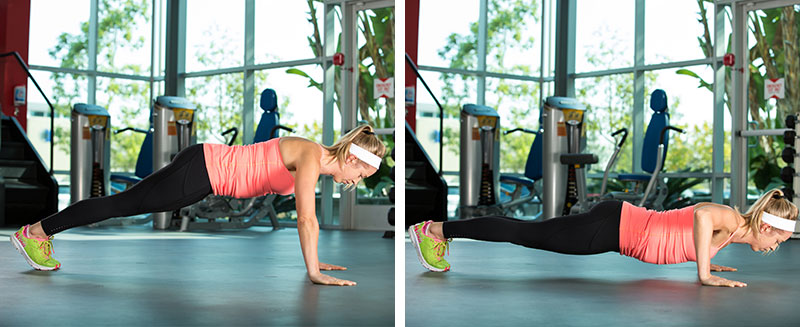
Sit on a bench and place the hands close to your sides, fingers facing forward. Kick the feet in front of you, so you’re resting on your heels, and scoot your hips off the edge, keeping your wrists directly below your shoulders (leaning forward will cause you to work your shoulders, not your triceps). Slowly lower your body down, making sure the elbows shoot straight back behind the body, not out to the sides. Raise back up and squeeze your triceps at the top to complete one rep.
Modify: Keep the feet close to your body and knees bent at a 90-degree angle.
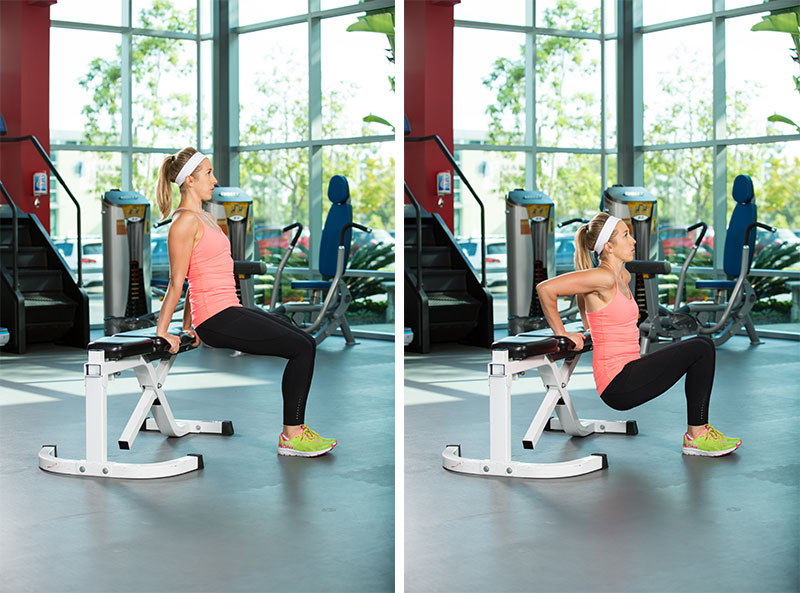
Grab a set of 2- or 5-pound dumbbells if you are a relatively new exerciser. You can increase weight once you learn the movement. Hold a dumbbell in each hand at your sides, palms facing in. Stand with the feet hip-width apart, drop the shoulders down and back, and raise the arms straight out to the side.
Once at shoulder height, keep the palms facing down and bring the hands toward one another to meet in the middle, in front of your body. Lower them down so the arms are resting against the front of your body. Raise them straight back up to shoulder height, back out to your sides and finally down to the starting spot to complete one rep.

Grab a set of 5- or 8-pound dumbbells if this exercise is new to you. Increase the amount of weight once you learn the movement and build strength. Hinge at the hips so that the chest is facing the floor; keep your back flat. Let the arms hang down below your body and slowly raise them behind your back. Slowly lower them back down to the starting position to complete one rep.
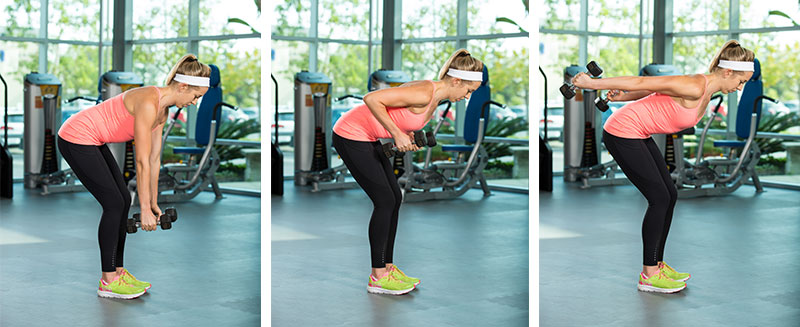
Grab a set of 5- or 10-pound dumbbells if this exercise is new to you (again, increase the weight as you become more comfortable with the exercise). Start with a dumbbell in each hand, arms hanging at your sides and palms facing away from your body. Keep the elbows in close to your body and use the biceps to bring the dumbbells to shoulder height.
Swing your arms out so the palms are now facing forward, with the elbows at a 90-degree angle and the dumbbells next to your ears. Raise both hands straight up above your head, and then lower back down to starting position to complete one rep.

Get into a pushup position with your feet shoulder-width apart, and place your hands directly below your face with your index fingers and thumbs forming a triangle. Contract your core and activate your quad muscles, and slowly lower your body down until your elbows reach a 90-degree angle. Push your whole body back up, ensuring that your core is engaged to avoid sagging in the hips.
Modification: Lower the knees to the ground
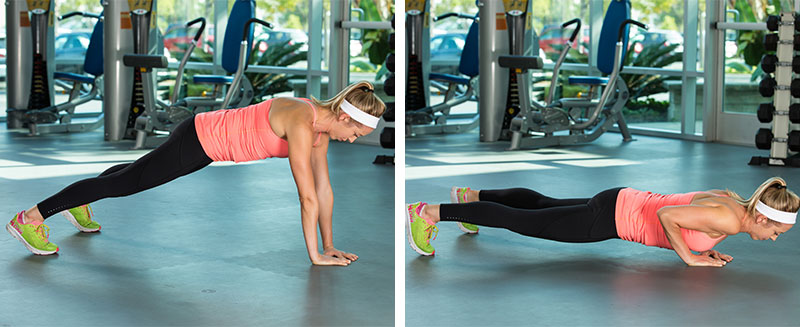
Deliver the individualized programs people need to adopt long-term, healthy behaviors with ACE’s Personal Trainer Certification.

Contributor
Jessica Thiefels has been writing for more than ten years and is the owner of Honest Body Fitness. As an ACE Certified Personal Trainer, she specializes in HIIT and circuit training, teaching small groups and working with clients one-on-one to reach their fitness and weight loss goals.
When it comes to following a cleaner, healthier diet, meat tends to be a rather polarizing food, with proponents and critics on both sides of the health spectrum. Even so, annual meat consumption in the U.S. (including red meat, poultry and fish) has increased steadily, rising from 205 pounds per consumer in 1980 to 230 pounds per consumer in 2016 (roughly 10 ounces per person, per day). By contrast, fruit and vegetable intakes have declined over the past 10 years, with nearly 80% of Americans (across all age groups) not meeting the recommended daily intake for vegetables.
Given the fact that this time period has seen a concurrent rise in both obesity and heart disease rates, some have questioned whether or not meat consumption to blame. However, the true culprit is overconsumption of calorically dense foods. While this might describe some meats, other types can be considered quite healthy.
The 2015 Dietary Guidelines for Americans recommend a plant-based diet, but this does not rule out meat consumption. Instead, many people opt for a semi-vegetarian approach—a flexitarian diet, as some have termed it—that may provide the most health benefits. This term conceptualizes a way of eating that places more emphasis on vegetable-based meals and less emphasis on meats. In other words, the most current recommendation is to eat a lot of vegetables with some meat (as opposed to the other way around). For the record, vegan and vegetarian eating patterns can supply all necessary nutrients as well.
If you choose to include meat in your diet, it’s important to know what health benefits you might be getting and how to choose the healthiest meats.
Protein. Meat provides complete, high-quality protein (roughly 7 grams perounce). While most Americans consume enough protein; however several myths about high-protein consumption exist. For example, some believe that the body can only absorb about 40 grams of protein at once. While it is true that the effectiveness of a single dose of protein levels off around 30-40 grams, this does not mean the body cannot utilize more than 40 grams or that it will automatically convert to fat. Nor will a high-protein diet wreck your kidneys or leach calcium from the bones. Unless you have a preexisting condition (such as high blood pressure, diabetes or kidney disease) and your fluid intake is adequate, a high-protein diet will not overstress the kidneys. And it’s actually an overconsumption of phosphorus (such as phosphoric acid in colas), not protein, that has the greatest negative impact on bone health.
Iron. Unlike protein, iron is deemed an under-consumed nutrient and iron deficiency is considered a public health concern for adolescent, premenopausal and pregnant women. Meat, especially red meat, contains ample amounts of heme iron, which has a very high biological value, meaning it is well absorbed. Iron from non-animal sources (non-heme) has a lower biological value.
Vitamin B-12. Vitamin B12 is only available from animal sources and plays an important role in digestion (stomach acid) and energy production. People who do not eat meat, dairy or eggs must supplement their diets with B12.
Lipid Profile and Cardiovascular Health. The research now suggests that low-carbohydrate diets are equally effective as low-fat diets at reducing weight and improving cardiovascular risk factors. Low-carbohydrate meal plans typically replace starches, grains and fruits with meats and healthy fats. Thus, when replaced with the correct proteins and fats, a high-meat diet can be heart healthy.
While meat does contain cholesterol (as all animal products do), the newest Dietary Guidelines has removed the cap on cholesterol consumption. Research suggests that dietary cholesterol has very little effect on blood cholesterol.
It is also worth noting that a recent extensive review of the scientific literature concluded that the body treats saturated fats from processed meats and unprocessed meats differently. That is, a small steak from the local butcher and a few slices of deli meat (laden with nitrates and other preservatives) may each contain 5 grams of saturated fat, but the latter will have a greater, negative impact on our health.
Non-Processed Meats. As a rule of thumb, it is best to buy foods with the fewest ingredients as these tend to be less processed and closer to their original form. Most meats do not have an ingredient list at all, because the food itself is the only ingredient (the same applies to fresh and frozen vegetables). Make these types of food the nucleus of your meal planning and preparation.
Grass-fed Beef. You are what you eat, but you are also what your food eats. Put another way, when we consume healthier animals, we become healthier ourselves. Arguably, one of the most important factors to overall health is the ratio of omega-6s to omega-3s in your diet. Grass-fed cattle have greater amounts of omega-3 fats than grain-fed cattle, as well as lower bacterial infections and parasites (meaning they require fewer antibiotics). The type of feed also matters more than the quality of feed; that is, organic-fed animals can still be fed food (corn, soy) they were never intended to eat.
Eggs. People often classify eggs as dairy, but eggs are the “fruit” of chickens, whereas dairy comes from cows (and a few other animals). Eggs are completely void of dairy products such as whey, casein and lactose, and offer the highest biological value of protein. Eggs are also high in vitamin A, various B vitamins, minerals and phytonutrients and, as discussed, are safe to eat again, despite their high amounts of cholesterol.
Small Fish. Many types of fish offer high levels of omega-3 fats. But small fish (bottom feeders), offer an additional benefit—sustainability. The environmental impact of our food sources is often overlooked and predators are the least sustainable because they eat fish that eat other fish—by the time your anchovy becomes a tuna, you have eaten 100 pounds of seafood.
While it is O.K. to eat tuna, mahi mahi, farmed salmon, shark, red snapper and swordfish occasionally, try to consume more mussels, oysters, clams, sardines, scallops Pacific halibut, rainbow trout, lobster and crayfish. These smaller fish also have lower mercury levels compared to predator fish.
Overall, a plant-based diet with meat appears to offer the most health benefits. Think of the ideal plate with a 2:1:1 ratio of vegetables, meats and fruit/starches. For most Americans, this means cutting total meat consumption in half, but it is even more important to consume quality meats such as grass-fed beef, eggs and small fish. Additionally, look for the words local and free-range when purchasing meat and poultry. Eating a little less meat overall, while also emphasizing, unprocessed, higher quality meats, will have no net change in your budget, but will make meals more enjoyable and have lasting health benefits.

Contributor
Justin Robinson is a Registered Sports Dietitian and Strength and Conditioning Coach who has worked with athletes from youth to professional level. As the nutrition director and co-founder of Venn Performance Coaching, he specializes in practical sports nutrition recommendations and functional conditioning techniques. Over the past 15 years, he has worked with athletes from the youth to professional level, including runners and triathletes, MLB players and U.S. Military Special Operations soldiers. He graduated from Cal Poly, San Luis Obispo with a dual degree in Nutrition and Kinesiology, completed his dietetic internship at the University of Houston and earned his Master’s Degree in Kinesiology at San Diego State University.
